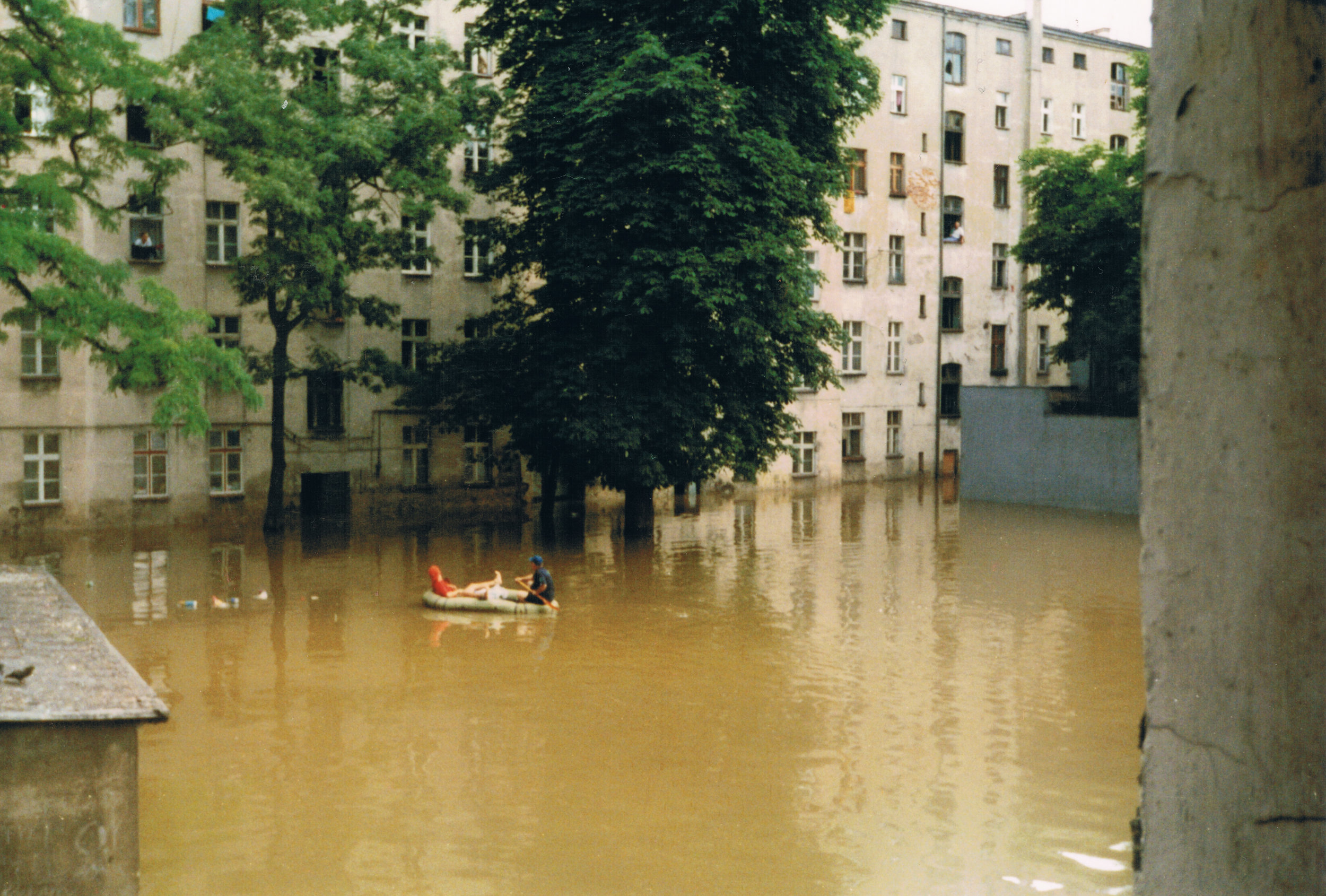Quick Travel Guide: Wroclaw, Poland
/WROCLAW
Country: Poland
Population: 637,683
Time zone: UTC +1
Closest airport(s): Copernicus Airport Wrocław
A little bit about Wroclaw
Wrocław's stunning town hall sits in the centre of Market Square.
The first thing anyone should know about Wrocław is how it’s pronounced. It isn’t “row-claw,” or “roc-la” – it’s actually “vrots-wahf.” Confusing now, but after some repetition it does role off the tongue.
Wrocław is western Poland’s cultural and economic hub, and also its largest city. A part of Germany prior to the end of World War II, it is now the capital of the Lower Silesian Voivodeship and sits on the banks of the River Oder.
The city was awarded the prestigious honour of being one of two European Capitals of Culture for 2016 alongside San Sebastián in Spain
With a student population topping 100,000, Wrocław is a university town and has a youthful and vibrant culture to match.
Why should I go?
The colours and architecture in Market Square are stunning.
It may not be the tourist meccas that Krakow and Warsaw are, but that’s all part of Wrocław’s charm. It’s still unspoilt in that way, and the foreigners you bump into are more likely to be part of the multicultural makeup of residents as opposed to fellow visitors.
But having less tourists doesn’t mean that there’s a lack of things to do. Wrocław is full of attractions and wonderful architecture. Having been around for over 1,000 years, there’s also plenty of history and quirks, like many Polish cities offer. And being less touristy also means lower prices. Wrocław’s cheap to fly to, cheap to stay in and cheap when it comes to entrance fees, food and drink.
It’s also great for party animals and fans of atmospheric watering holes. Thanks to a large student demographic, bars and clubs are aplenty, and there’s no chance you will go thirsty in Poland’s fourth-biggest city.
The main attractions
Wroclaw’s Dwarfs
The dwarfs can be found all over Wrocław .
It is virtually impossible to go to Wrocław and fail to see one of their famous dwarfs. Now a symbol of the city, the dwarfs first appeared in 2001 when a statue of one was erected on Świdnicka Street in commemoration of the Orange Alternative, an anti-communist movement in Poland.
Rather than fight back, the city authorities honoured the group and commissioned the placing of a dwarf statue in the city centre.
Dwarf fever has since grown in Wrocław and now, according to an authoritative source, 165 of the gnomes adorn the city streets in different varieties. Visitors can go on the dwarf trail, or just count how many they see along the way.
As they say, big things come in small packages.
Cathedral of St John the Baptist
The two spires of St John the Baptist rise high over Wrocław.
The Cathedral of St John the Baptist is located in one of the nicest parts of the city. The gothic church has two spires and is home to the largest organ in Poland.
Its tall stature provides the perfect vantage point to look out over the city to catch some wonderful views, and for just 5 zł, an elevator will take you to the top.
And on the way to the cathedral, don’t forget to cross the lovelock bridge and check out the trove on display.
Market Square
Market Square annually hosts one of Europe's finest Christmas markets.
Market Square is both Wrocław’s centrepiece and masterpiece. Although it’s age may be deceiving as it was rebuilt from a pile of rubble after the Seige of Breslau in 1945, it captures the essence of classic Polish and German architecture.
The blend of colourful and vibrant buildings that surround the perimeter keep the wonderful Town Hall, contained, which houses a museum and a basement restaurant.
Market Square is where the annual Christmas market and festive celebrations take place, and it’s one of the best times to take to that part of Wrocław.
Centennial Hall
Wrocław’s Centennial Hall is a historic building which was built between 1911 and 1913 when the city was a part of the German Empire.
It serves as a multiuse venue, hosting exhibitions, concerts, theatrical and opera performances and sporting events, and became of Poland’s official national Historic Monuments in 2005.
The hall is a UNESCO World Heritage Site, and is located close to Wrocław Zoo. On the hall’s grounds also sits Wrocław’s Multimedia Fountain which, in the summer season comes alive with music, light and water.
Aula Leopoldina
The amazing Aula Leopoldina - for me a must-see part of Wrocław.
Wrocław is a big student town and its university is centrally located. But at the University of Wrocław it’s not all lecture halls and classrooms.
In fact it houses Wrocław’s hidden gem – Aula Leopoldina. Part of the University Museum’s layout, Aula Leopoldina is a ceremonial hall decked out in baroque brilliance. It is, undoubtedly, one of the most beautiful rooms in the world, and really needs to be seen to be fully appreciated.
Getting there
Wrocław is well served by Copernicus Airport Wrocław, which a number of budget airlines including Ryanair and Wizz Air fly to and from. To get from the airport to the city, take bus 106 or the night bus 206.
Rail services run both domestically and internationally from Wrocław Glowny, the main train station. Although a cheaper way to travel to Poland and the surrounding countries is by bus. While renovations take place on the city’s bus station, there is a temporary one adjacent to the railway, and there are plenty of coach providers that run reasonably priced routes to Wrocław.
Getting around
While Wrocław may be the biggest city in western Poland, the city centre isn’t big enough for visitors to need to rely on public transport to get around. Walking will suffice in almost every instance but there are some areas, such as the Municipal Stadium, where one of the city trams will help save some time and energy.
For more information on Wrocław's public transport network, click here.
Where to stay
Wrocław is abuzz with hotels and hostels, and there are plenty of options to choose from. We stayed in the three-star Premiere Classe Wrocław Centrum. It was an unassuming hotel, well located and had the basics that we needed. I would recommend it to those looking for somewhere cheap and ample, but there are plenty of other options over at Booking.com.
Eat & Drink
One of Poland’s greatest assets is how cheap it is, assuming you come from a country where prices aren’t similar. This means three courses and a drink in most places will be the same as a single dish in the United Kingdom.
Wrocław is home to plenty of great restaurants. I would always advise trying traditional food in any country you visit, and great Polish cuisine can be found at Kurna Chata, a cosy little eatery, and Targowa, a craft beer and food establishment.
But don’t just stick to restaurants for food, try some Polish snacks, too. I’d recommend oscypek, which is fried sheep’s cheese best served with cranberry sauce, and pumpkin seed cookies. Delightful.
In addition to great food, the nightlife in Wrocław is top-notch, and it has to be to satisfy such a large student population. This starts with the atmospheric, albeit more expensive, bars in Market Square, and extends to clubs like Nietota and Antidotum, which offer up the chance to have a memorable night out.
Five observations
Why aren’t more people making a fuss over Wrocław?
A random underpass in Wrocław.
The tourism board for Wrocław face a difficult task. They have a great product, but it’s tough to push it out to a market dominated by tourist hotspot Kraków and the capital, Warsaw.
Wrocław is an absolutely stunning place that is well worth visiting, and it’s accessibility and budget-friendly nature make it a prime location for a European city break. It didn’t become European Capital of Culture 2016 for no good reason.
But just because it might be under-the-radar, doesn’t mean that it always will be. Hopefully its popularity continues to grow, because Wrocław is a great city and deserves the acclaim.
Let’s get festive
Wrocław is the perfect destination for a Christmas getaway. It has perfect winter nights, beautiful and ornate decoration and a Christmas market to rival the very best.
I recently wrote a blog on Wrocław at Christmas time. You should go an check it out for more festive cheer.
Shop ‘til you drop
Wrocław has multiple shopping malls, and popular companies like Zara and H&M sell their clothes at a fraction of the price that you’d find at home, with no compromise on quality.
Poland is a cheap place to buy stuff, so make sure to leave some room in your suitcase in case you decide to dabble in some retail therapy.
Home, sweet home
Because Wrocław isn’t overrun with tourists and is such an important cultural and economic centre in Poland, it has a distinct homely feel to it.
I was surprised that I liked Wrocław as much as I did. Our trip was an impulse purchase thanks to a Ryanair flash sale, but I am so glad I took the plunge.
Wrocław has a strong expat community and a significant number of Erasmus students, making it a place of both work and play, offering a different flavour to its counterparts.
Capital of Culture is only a good thing
Having grown up in and around Liverpool, I know how being named European Capital of Culture can affect the growth and progress of a city, and Wrocław seems to have been the same.
When we went to Centennial Hall, there was some sort of book fair-cum-craft market which appeared to be part of the Wrocław 2016 celebrations. That was just one of many cultural events on the celebratory calendar, and it was great to be able to get amongst it all.
What Wrocław 2016 aimed to do was to enhance visibility, boost local pride, increase the number of tourists and improve access to culture. From what I saw in the 12th month of this project was positive, but the legacy created by being Capital of Culture is dependent on whether the city can push on and make those objectives a lasting reality.
Wrocław blew me away in all honesty, and I wish the best to a city that I definitely want to go back to in the near future.
Did you know?
Image credit: Aleksander Sikora/Creative Commons
In July 1997, there was a big flood that affected areas of the Czech Republic, Poland and Germany following periods of excessive and rainfall, which amounted to months’ worth of precipitation in just a few days.
Image credit: JMK Kokot/Creative Commons
Image credit: W Poliszczak/Creative Commons
It was a disaster, and one of the worst-affected regions was southwest Poland. Wrocław suffered badly during what was dubbed the “Millennium Flood,” when the banks of the Odra and Oława rivers burst their banks by the town of Siechnice.
Over 162,000 people were evacuated in Wrocław and over 100 lives in total were claimed by the floods.



































As Poland's underrated gem, Wroclaw has a lot going for it. Find out why you should go and what to do in western Poland's biggest city.